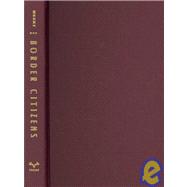
What is included with this book?
| List of Illustrations | |
| Acknowledgments | |
| Introduction | |
| Desert Empire | |
| From Noble Savage to Second-Class Citizen | |
| Crossing Borders | |
| Defining the White Citizen-Worker | |
| The Indian New Deal and the Politics of the Tribe | |
| Shadows in the Sun Belt | |
| The Chicano Movement and Cultural Citizenship | |
| Villages, Tribes, and Nations | |
| Conclusion | |
| Borders Old and New | |
| Notes | |
| Selected Bibliography | |
| Index | |
| Table of Contents provided by Publisher. All Rights Reserved. |
The New copy of this book will include any supplemental materials advertised. Please check the title of the book to determine if it should include any access cards, study guides, lab manuals, CDs, etc.
The Used, Rental and eBook copies of this book are not guaranteed to include any supplemental materials. Typically, only the book itself is included. This is true even if the title states it includes any access cards, study guides, lab manuals, CDs, etc.